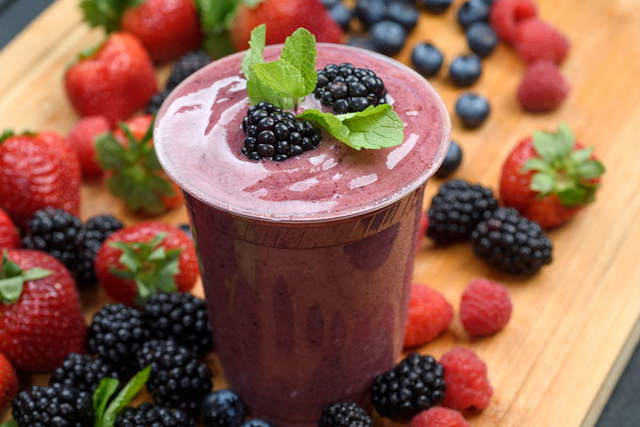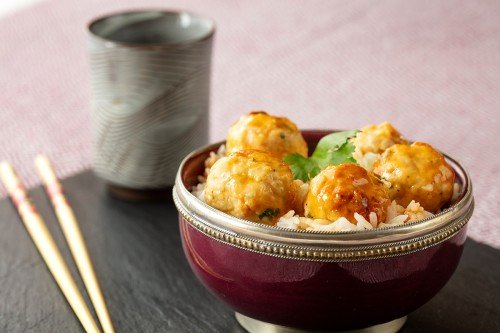
MSK specialists recommend adding high-calorie foods to smoothies for people who need to gain or maintain weight during cancer treatment.
During cancer treatment, many people face a nutritional double whammy. The disease can rob them of their appetite and sap their strength just when their need for calories goes into overdrive.
The body requires more energy during cancer treatment, both to fight the disease and to deal with the effects on healthy tissue from chemotherapy, radiation, and surgery. “When people have cancer and are receiving treatment, they’re undergoing increased metabolic stresses, so they are burning more calories as fuel,” explains Stephanie Cook, a specialist in oncology nutrition at Memorial Sloan Kettering. “If the body doesn’t get enough calories and protein, it will start burning lean muscle mass instead of fat reserves for energy.”
People who are advised by their doctor or registered dietitian to consume more calories during treatment may need to make changes in their diet. For some, the recommendations may seem counterintuitive. “I tell patients there is a new normal when they are in treatment,” says Ms. Cook. “For now, the emphasis is not on fruits and vegetables because they are low in calories and fill you up quickly. Instead, focus on foods that are dense in calories and protein.”
Her MSK colleague Alicia Gould, a clinical dietitian and nutritionist, explains that “many of our patients find it hard to eat during treatment. We tell them to eat nearly anything that appeals to them.”
Tips to Add More Calories during Cancer Treatment
Some cancer therapies require very specific diets. For people who need additional calories to maintain or gain weight during cancer treatment, MSK experts find that most people will benefit from the following strategies:
- Eat smaller meals throughout the day — six or eight—instead of the traditional big three.
- If a food is appetizing to you, eat it, especially if it’s high in calories and protein.
- Have snacks handy so you can eat any time you feel like it, especially high-calorie snacks, such as nuts or seeds.
- Feel free to break up food. For instance, divide a sandwich and eat it throughout the day.
- If even liquid nutrition is hard to consume, use a medicine cup instead of trying to drink it all at once. The cup holds an ounce and a half, so if you drink one cupful every hour, you’ll take in a significant amount of nutrition over the course of a day.
- To save time and energy, stock up on frozen and prepared foods, such as pizza, frozen dinners, mac and cheese, and rotisserie chicken. That way, you and your caregiver will always have something on hand.
- Avoid foods and drinks labeled “low fat,” “nonfat,” or “diet.” For example, use whole milk instead of skim.
- Try to drink water between meals but not too much during them, to keep from filling up without taking in calories and protein.
- Comfort foods that are easy to prepare make life easier for patients and caregivers. Ask visitors for dishes that are easy to freeze and heat up, like soups, chilis, lasagnas, and casseroles that include calorie-dense ingredients, like pasta, cream, cheese, meat, and beans.
Foods to Help Add Calories during Cancer Treatment
MSK’s experts advise patients to choose foods that are dense in calories and protein but low in bulk. Liquid or soft foods are often easier to consume.
- Drink shakes and smoothies. To add even more calories, include dried milk, protein powder, full-fat ice cream, peanut butter or another nut butter, or avocado.
- Use liquid nutritional supplements, such as Ensure or Carnation Breakfast Essentials.
- Add butter, margarine, or oil to potatoes, rice, pasta, sandwiches, toast, and hot cereal.
- Top crackers and bread with jelly, honey, cream cheese, nut butter, or avocado slices.
- Snack on pudding, or dip tortilla chips in guacamole.
- Add calorie-rich toppings, such as cheese, creamy salad dressing, gravy, mayonnaise, yogurt, sour cream, or sweetened condensed milk.
- Use whipped cream on top of cakes, waffles, French toast, puddings, and hot chocolate.
- Mix granola with yogurt or put it on top of ice cream.
- Add croutons to omelets or include bread stuffing as a side dish with meals.
- Drink fruit nectars or fruit shakes.







